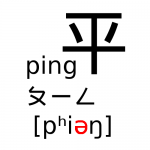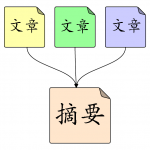Articles in the ‘Advanced’ category Page 22
-
Learning to pronounce Mandarin with Pinyin, Zhuyin and IPA: Part 2
Which transcription system should you use for Mandarin Chinese: Pinyin, Zhuyin or perhaps IPA? Which system you start out with isn’t extremely important, but if you care about pronunciation, it certainly helps to learn more than one system. In this article, I discuss the pros and cons of all three systems and offer some advice about learning pronunciation.
Read → -
Chinese listening practice with 锵锵三人行
锵锵三人行 is one of the few Chinese TV programs I actually like. It’s also one of the best ones for language learners too, mostly because of it’s heavy focus on talking, availability of transcripts and variety of both guests and topics. This should be a key component of any immersion effort, but you probably need to be upper intermediate or above to benefit.
Read → -
Learning to pronounce Mandarin with Pinyin, Zhuyin and IPA: Part 1
Learning to pronounce Mandarin involves several steps. You need to first discriminate between and then identify the sounds, but you also need to be able to write them down and also be able to read how words are pronounced. In this article, I discuss this process and how you should go about it. It also contains advice for what to avoid!
Read → -
Learning Chinese through audiobooks
Listening to audiobooks in a very good way to improve your listening ability beyond the basics. This article contains advice about how to choose a suitable novel, where to find it and how to listen to it.
Read → -
Bite-sized learning isn’t enough to learn Chinese
Bite-sized learning is great, but it’s not enough if you want to build real competence in Chinese listening and reading. To expose yourself to enough text and audio, you need long-form content that you can keep using even when you’re energy levels aren’t at 100%.
Read → -
The best Twitter feeds for learning Chinese in 2015
Who should you follow on Twitter if you want to learn Chinese? There’s an increasing number of people who tweet excellent language content within the 140 character limit, often with pictures. This article contains a list of the 9 best ones, including a short intro and examples of what they tweet.
Read → -
Hone your Chinese writing ability by writing summaries
Writing summaries is an excellent combination of reading and writing practice. It’s one of the most powerful learning activities I know when it comes to improving writing ability. In this article, I discuss how to improve writing ability in general, but with a clear focus on why and how writing summaries should be part of your study routine.
Read → -
Will a Chinese-only rule improve your learning?
Is a Chinese-only rule good for learning? Most people agree that immersion is a good thing, but that’s not the same as saying that using no English is good
Read → -
The new paperless revolution in Chinese reading
In this (guest) article, David Moser writes about the importance of going digital in your Chinese reading practice. With the right tools and the right approach, learning to read Chinese becomes much easier. While it still requires time and dedication, it’s no longer as hard as it used to be. Don’t miss out on the paperless revolution in Chinese reading!
Read → -
A minimum-effort approach to writing Chinese characters by hand
Learning characters in the first place takes time, but you also need to maintain that knowledge. This article presents an efficient way to remember how to write Chinese characters in the long term.
Read →









